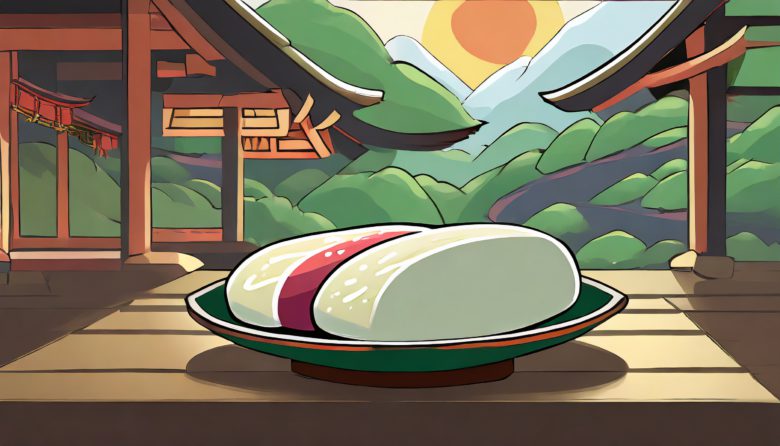Mochi is a traditional Japanese food made by steaming glutinous rice and then pounding it.

It is known for its sticky texture and unique chewiness.

Mochi is enjoyed all over Japan, both as a festive food during the New Year and as an everyday snack.
History of Mochi
The history of mochi dates back to the Nara period and has been used in Japanese rituals and seasonal festivals.
Eating mochi is also associated with wishes for abundant harvests, health, and longevity.
The “Kagami Mochi,” a special mochi for the New Year, plays an important role in welcoming the gods of the new year.

Mochi Dishes
Mochi is used in a variety of dishes. Some popular examples include “Kinako Mochi” coated with soybean flour and sugar, “Ozoni Mochi” in a traditional New Year’s soup, and “Isobe Mochi” with cheese and seaweed.
The ways to enjoy mochi vary with the seasons.
Where to Enjoy Mochi Dishes



In Tokyo, there are many shops and cafes that serve traditional and modern mochi dishes.
For instance, you can taste handmade mochi in traditional Japanese sweet shops near Shibamata Taishakuten in Asakusa.
In trendy areas like Harajuku and Omotesando, cafes offer mochi-based desserts and drinks.
Caution with Mochi
Mochi is extremely sticky and can cause choking hazards, especially for the elderly and children.
To prevent choking, it’s important to cut mochi into small pieces and chew it slowly.
Additionally, always be cautious and look out for each other when eating mochi together.
During your trip to Tokyo, don’t miss out on experiencing this traditional Japanese delicacy.
Enjoying mochi offers a great opportunity to immerse yourself in the rich history and culture of Japan.


